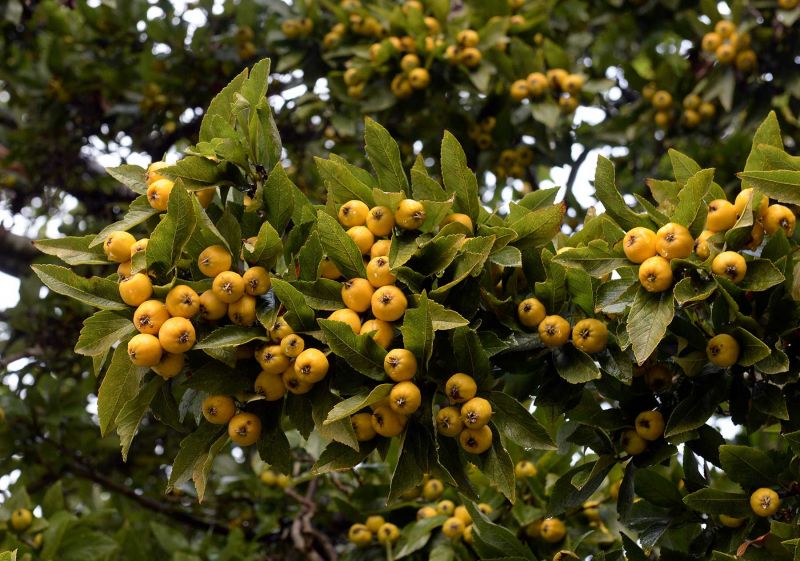Fruit a Feature of Mexican Hawthorn
This article was first published on 03 Aug 2017.

Crataegus pubescens f. stipulacea
Photo by the Otago Daily Times
“Is it edible?” This is the most commonly asked question when folk see the Mexican hawthorn tree dripping with fruit. The best reply is the quintessential kiwi saying “Yeah, nah”. Yeah, absolutely the fruit is edible, but nah… the flavour of this particular tree is something of an acquired taste that may not appeal to the masses.
Nevertheless, the Mexican hawthorn, Crataegus pubescens f. stipulacea, is totally worth growing for its ornamental value alone. A mature tree is located in the lower botanic garden camellia collection behind the winter garden glasshouse. This particular tree has grown into a specimen of real character. The multi-stemmed trunk is grey-brown and deeply grooved, twisting like wrung out towels into the canopy.
Topping off those gorgeous trunks, is the crowning glory of the fruit-laden canopy. At the moment the Mexican hawthorn is covered with clusters of small apple-like fruits or haws. The pretty fruits are lemony-yellow with a hint of orange or green and speckled with tiny brown dots. Individually each fruit is only the size of a cherry tomato, but viewed from a distance, the sheer amount of fruits en masse change the colour of this evergreen tree to a hue of soft lemon.
- The native wood pigeon, kereru graze on the fruit, gulping them down whole.
- The fruit drops to the ground in a sea of pale lemon.
- At the botanic garden, the dark purple flowers of winter rose planted in a drift underneath look fantastic contrasting with the yellow fruit.
Garden Life is produced by Dunedin Botanic Garden. For further information contact Marianne Groothuis.


